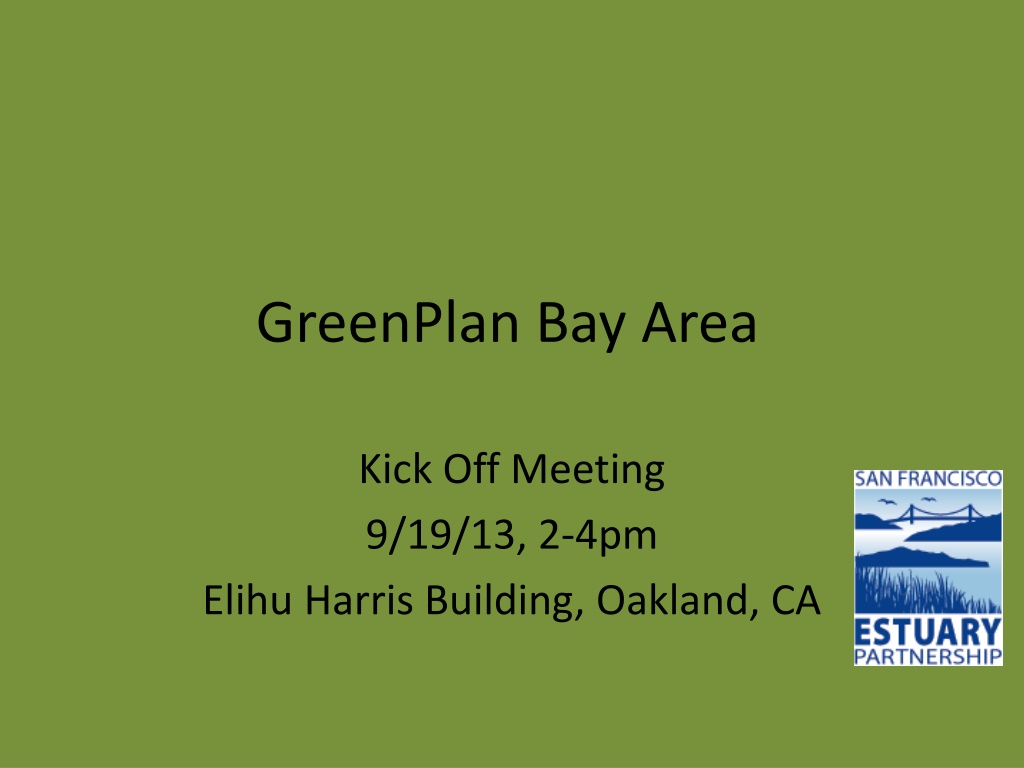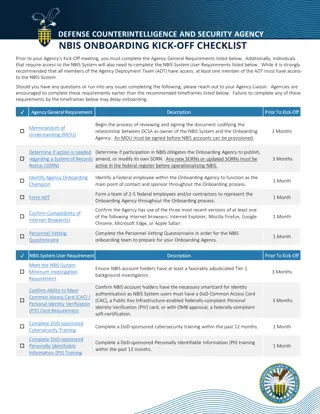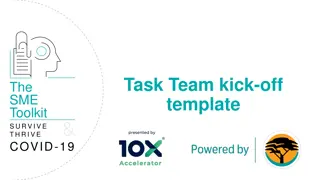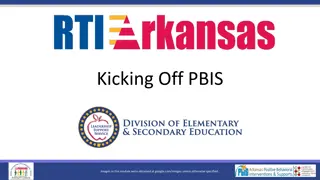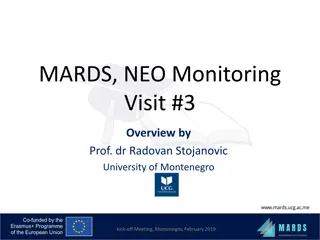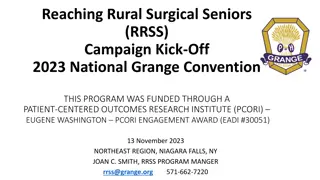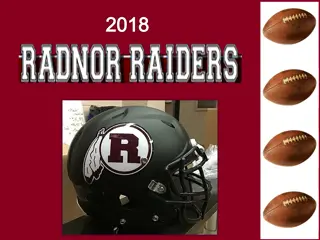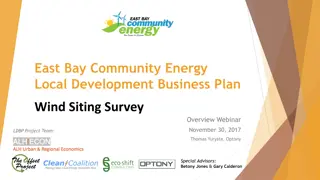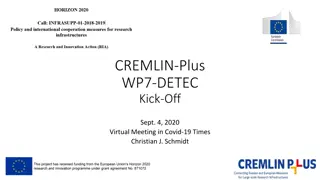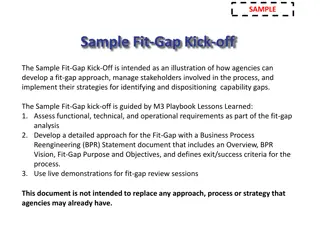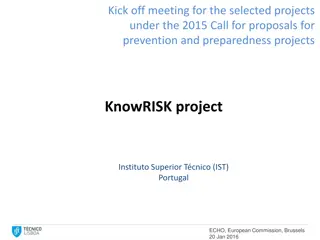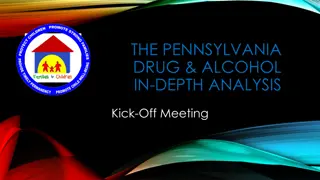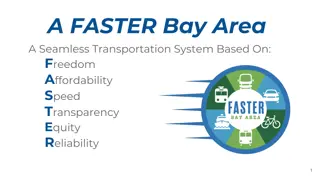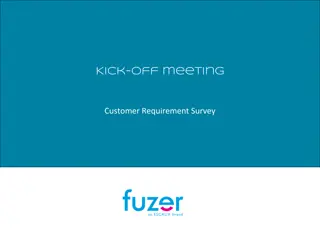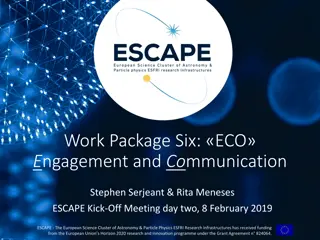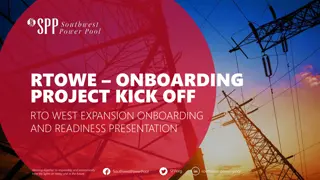GreenPlan Bay Area Kick-Off Meeting Overview
The GreenPlan Bay Area Kick-Off Meeting held on 9/19/13 in Oakland, CA, introduced the project, discussed roles for cities, and presented the Green Plan-It toolbox. Key topics included municipal efforts in green infrastructure planning, low-impact development strategies, and GIS tools for site suitability analysis. The meeting aimed to set the foundation for collaborative planning to maximize environmental benefits while minimizing costs.
Download Presentation

Please find below an Image/Link to download the presentation.
The content on the website is provided AS IS for your information and personal use only. It may not be sold, licensed, or shared on other websites without obtaining consent from the author. Download presentation by click this link. If you encounter any issues during the download, it is possible that the publisher has removed the file from their server.
E N D
Presentation Transcript
GreenPlan Bay Area Kick Off Meeting 9/19/13, 2-4pm Elihu Harris Building, Oakland, CA
Agenda Welcomes 2pm Introduction of Project 2:15 Roles for Cities 2:25 Discussion / Q & A 2:35 Overview of GreenPlan-It 3:00 Initial Thoughts on Data / Discussion 3:20 Next Steps 3:45
Welcome 2-2:15 Jennifer Krebs Greetings from SFEP Go around room Sign-in sheet (needed for State Board)
Introduction of Project 2:15- 2:25 Jennifer Krebs Project Team: SFEP, SFEI, Dan Cloak, Jennifer Walker Web Page http://www.sfestuary.org/greenplan ning Basecamp Project Schedule Project Outcomes Purpose of Meeting Jesse Mills
Roles for Municipalities 2:25 2:35 Jennifer Krebs TAC Members Master Planning Agency Interested Party
Discussion / Q&A 2:35 3:00 Jennifer Krebs Municipalities current efforts that dovetail with Green Infrastructure Master Planning? How do you think the Plans can benefit your municipality? How do you think an alternative compliance program can benefit your municipality? Questions?
Overview of Green Plan-It 3:00-3:20 Lester McKee SFEI In a given watershed What quantitative water quality and hydrological improvements can be made with Low Impact Development? What is the optimal plan? With LID, can we improve upon the cost/benefit of grey infrastructure alone?
GreenPlan-it toolbox Critical Areas Tool GIS Siting Tool Improvement vs. Cost Improvement Target LID (+ Grey) Grey Infrastructure Cost Feasible & Effective Optimization Tool Maximize benefit Minimize cost Master Plan - -
GIS Siting Tool Regional LID Site Suitability Tool SFEI (2012) High Low Use local + regional GIS layers to identify feasible sites Infrastructure Private vs. public land Redevelopment plans Capital improvement plans
Critical Areas Tool Simulate watershed processes Identify critical sources areas Flow Contaminants Overlay area-specific considerations Areas of known flooding
Critical Areas Tool GIS Siting Tool Combination = Initial for optimization e.g., 1000 possible locations Feasible & Effective Field verification
e.g. Peak flow reduction Target cost Feasible & Effective Optimization Tool Maximize benefit Minimize cost Master Plan - -
e.g. Peak flow reduction Target Grey Infrastructure cost Feasible & Effective Optimization Tool Maximize benefit Minimize cost Master Plan - -
Multiple simulations e.g. Peak flow reduction Quantify potential effectiveness Target Balance benefit and cost LID + Grey Infrastructure LID (+ Grey) Grey Infrastructure cost Feasible & Effective Optimization Tool Maximize benefit Minimize cost Master Plan - -
Multiple simulations e.g. Peak flow reduction Quantify potential effectiveness Target Balance benefit and cost LID + Grey Infrastructure LID (+ Grey) Grey Infrastructure cost Feasible & Effective Optimization Tool Maximize benefit Minimize cost Master Plan - -
GreenPlan-it toolbox Critical Areas Tool GIS Siting Tool Improvement vs. Cost Improvement Target LID (+ Grey) Grey Infrastructure Cost Feasible & Effective Optimization Tool Maximize benefit Minimize cost Master Plan - -
Discussion Questions What output would be most useful? How could this project/toolkit best integrate with near-term and longer-term planning processes?
Local Data Needed for Toolkit Topography ~1ft vertical resoluton (LiDAR) Land cover - ownership, parcels, roads Hydrology - storm drainage network, depth to groundwater, flow Water Quality Monitoring Imagery current (2010 or later) high resolution (<1 ft) aerial photography Catchment Delineations - <HUC12 Additional data - any other partner-specific data themes or locations to be included in analysis of LID implementation, e.g., red curbs, right of ways, public parks, etc. Meteorology precipitation, temperature Diversion - any water uses that divert water from the stream/watershed (locations and amounts) Existing LID information - Location, type, remove efficiency, design capacity, any post-implementation monitoring data Existing Stormwater Models Local cost information on various types of LID - capital, operation and maintenance
Questions on Data 3:20-3:45 Kristen Cayce Input: What local data sets do cities have? Who might we contact to acquire data? Output: What type of format of outputs that works best for cities? (map, list....)
Next Steps 3:45 3:55 Jennifer Krebs Memo to Munis re data availability, interest in X role in project, reflections on this meeting (regarding project goals, etc.) 9/25/13 SFEP Due date for response to memo 10/15/13 - Municipalities Selection of munis for various roles - 11/1/13 - SFEP Memo to selected munis on data collection next steps (11/1/13), and follow up communications as needed on how to collect data (data due 12/13)
